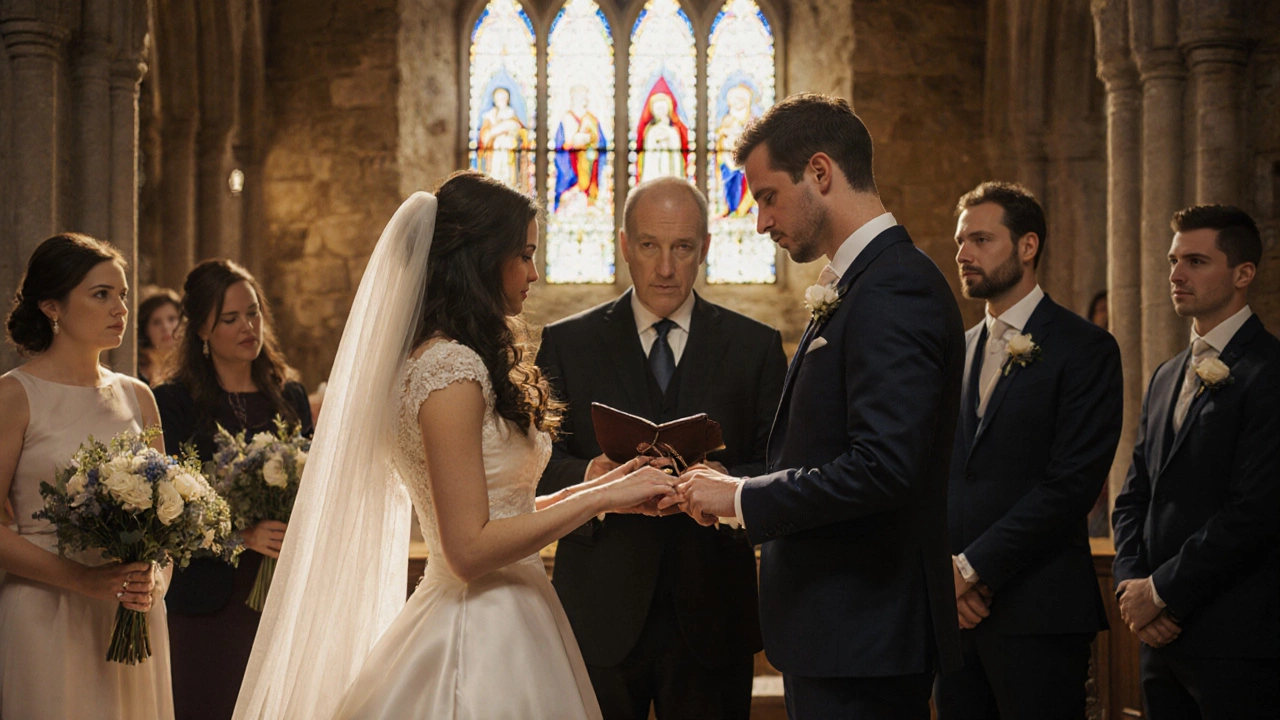Ring Exchange Timing: When to Swap Vows and Bands at Your Wedding
When you think about the ring exchange timing, the precise moment in a wedding ceremony when partners swap their wedding bands. Also known as ring ceremony, it’s one of the most emotional and visually memorable parts of the day—but it doesn’t just happen randomly. It’s tied to your vows, your officiant’s script, and even the music cues. Get this wrong, and you risk awkward pauses, misplaced rings, or guests wondering if the ceremony’s over. Get it right, and it becomes a quiet, powerful moment that sticks with everyone.
The most common timing is right after you say your wedding vows, the personalized or traditional promises made between partners during the ceremony. That’s because the rings symbolize the promises you just made. Say your vows, pause for a breath, then slide the rings on. Some couples swap them immediately after the final "I do," others wait until the officiant says "you may now kiss"—but that’s usually too late. The ring exchange should come before the kiss. It’s the physical seal of the vow, not the celebration after it.
There’s also the question of who goes first. Traditionally, the groom goes first, then the bride. But modern weddings often flip that, or do them simultaneously. If you’re doing personalized vows, make sure your ring exchange timing matches the rhythm of your words. If your vows are long and emotional, give yourself space—don’t rush the rings. If your ceremony is short and snappy, keep it tight. Your officiant should help you rehearse this. And if you’re DIYing your ceremony, practice with your partner. Hold the rings, time the pause, feel the flow.
Don’t forget the wedding ceremony order, the sequence of events that structure the entire wedding ritual. The ring exchange doesn’t exist in a vacuum. It usually comes after the welcome, the readings, the vows, and before the pronouncement. If you’re including a unity candle or sand ceremony, those often happen before the rings. Mixing those up can confuse guests and disrupt the emotional arc. Keep it simple: vows → rings → pronouncement → kiss.
And what about the rings themselves? Make sure they’re easy to access. Don’t let your ring bearer fumble. Have a trusted person—maybe your best friend or a parent—hold them until the moment. Keep them on a small pillow or in a pocket. No one wants to hear a ring clatter to the floor during "I now pronounce you."
There’s no single rulebook. Some cultures exchange rings before the vows. Some don’t exchange them at all. But if you’re following a Western-style ceremony, the timing matters. It’s not just tradition—it’s pacing. It’s emotion. It’s the moment your hands meet and everything changes. The right timing turns a routine action into a quiet, unforgettable heartbeat in your day.
Below, you’ll find real advice from couples who’ve been there—how they nailed their ring exchange, what went wrong, and how to avoid the common mistakes that make this moment feel rushed, awkward, or forgettable.

Do You Exchange Rings Before or After the Vows? The Right Timing for Wedding Rings
The traditional order is to exchange wedding rings after the vows, but some couples choose to swap them before. Learn why timing matters, how different cultures handle it, and what to do if you forget the rings.